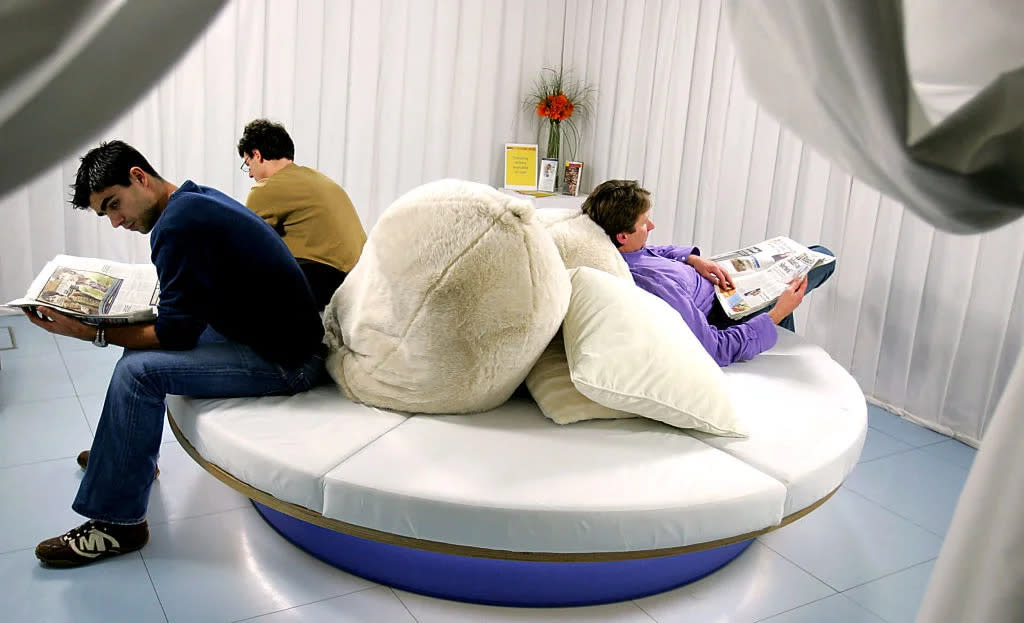Colder weather, less daylight, and seasonal changes can affect your overall mood, leading to depression or seasonal affective disorder, also known as SAD, which affects about 11 million people each year in the United States. United.
Seasonal affective disorder can begin with the first signs of fall or winter, including cooler temperatures and less daylight as the shortest days of the year approach.
WebMD Chief Medical Officer Dr. John Whyte said torrential rains in the Northeast could make people feel the seasonal blues earlier this year.
“With all this rain in some parts of the country, I’m not surprised that people are starting to feel depressed now rather than, you know, in a few weeks or months,” Whyte said.
HOW TO RECOGNIZE SEASONAL AFFECTIVE DISORDER AS WINTER APPROACHES
Doctors are still trying to understand all the elements of SAD, including why some people have it and others don’t. Whyte said it was likely triggered by a hormonal imbalance. As people have less exposure to sunlight, this affects melatonin levels and, in turn, disrupts sleep, causing other symptoms of seasonal depression.
“If you suffer from seasonal affective disorder. Your levels of melatonin, serotonin and cortisol are out of balance, which changes your mood and makes you feel tired, depressed, sad, lose weight and lose interest in things,” said Whyte. “It’s not in your head. There’s a reason why, physiologically and in your brain, you feel these emotions.”
It’s important to know that the “winter blues” could be a diagnosable seasonal affective disorder, and knowing the signs can help combat negative feelings.
Lack of appetite, weight loss, general mood changes, feelings of sadness, and lack of sleep are all signs of seasonal depression. To find out if what you are experiencing is SAD, there are online self-assessments that can help you identify it.
According to D’AMORE Health, approximately 5% of the population, or 1 in 50 people, experiences seasonal depression.
Whyte said a healthy diet and exercise can go a long way in treating seasonal depression.
HISTORICALLY STRONG EL NINO WINTER POSSIBLE WITH GOOD CHANCES IT WILL LAST UNTIL SPRING, NOAA SAYS
“Physical activity always releases the feel-good endorphins, so it’s going to improve our mood first and foremost,” Whyte said.
Other treatments include using a light box to replicate sunlight producing the vitamin D your body needs.
“It’s not just about walking into a room and turning on the lights,” Whyte said.
WHERE THE SUN NO LONGER BRINGS ENOUGH VITAMIN D UNTIL NEXT SPRING
According to the Yale School of Medicine, exposure to bright light of 10,000 lux seven days a week for 30 minutes before 8 a.m. can help improve SAD symptoms in most patients.
Getting natural sunlight when possible is also another treatment. This can be sitting by a sunny window or outside for a little while.
“The key is sunlight, that light that’s going to help you improve your mood,” Whyte said.
During this time, others will need professional help in addition to the treatment options listed above. A psychologist or psychiatrist will help you determine a treatment plan and any possible medications.
Seasonal affective disorder also occurs due to too much sun. Starting in spring, nearly 2 million people suffer from summer blues when the day lasts 10 to 12 hours. Most of these patients are closer to the equator and symptoms may include feeling restless and anxious, poor appetite, weight loss, difficulty sleeping, and violent or explosive behavior.
Original article source: The first signs of poor winter weather can trigger seasonal depression and seasonal affective disorder.
#signs #poor #winter #weather #trigger #seasonal #depression #seasonal #affective #disorder
Image Source : www.aol.com

